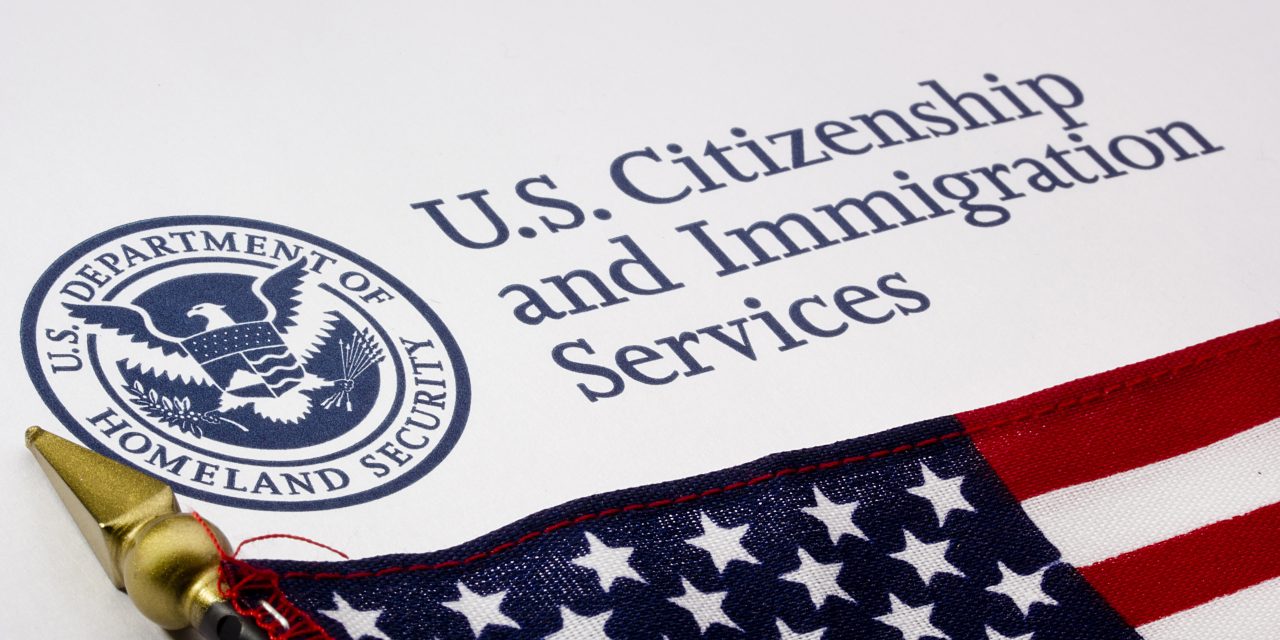U.S. Citizenship and Immigration Services (USCIS) made a request for $1.2 billion in emergency funding from Congress. USCIS’ funding is unique since it primarily flows from the fees people pay in pursuing immigration benefits, such as petitions for noncitizen workers and applications for naturalization.
USCIS is justifying this billion-dollar bailout based on a projected 61% reduction in applications due to COVID-19. Though there is little doubt that COVID-19 reduced the number of people seeking immigration benefits over the last few months, USCIS’ financial struggles predate the pandemic. Its troubles are largely due to the agency’s own fiscal mismanagement and counterproductive policies.
The agency nevertheless claims that the pandemic has reduced its revenue so severely that two-thirds of its workforce may be furloughed as early as next month.
But a close examination of USCIS’ operations before the coronavirus pandemic reveals a different story. Ineffective procedures, fiscal mismanagement, and a series of policies have harmed the agency’s own bottom line.
Congress must condition any emergency funding on greater transparency, accountability, and efficiency to ensure that the agency does not find itself in a similar situation in the future.
1. USCIS must become more fiscally responsible.
The agency’s own data confirms that the total volume of cases that it received between fiscal years 2017 and 2019 fell by 10%, prior to the pandemic. Even though the volume of new cases fell, the agency expanded its personnel by nearly a quarter between 2015 and 2018.
USCIS significantly expanded its payroll expenses amid declining revenue. This is a completely unsustainable pattern, and one that predates the COVID-19 pandemic.
The reduction in overall revenue is due in large part to USCIS’ own counterproductive policies.
Changes like its public charge rule and the high denial rate of applications and petitions significantly reduce the number of people who qualify for immigration benefits. These new policies, perhaps intentionally, create a deterrent effect for new filings. USCIS received 8.7 million applications during fiscal year 2018, which dropped by over a million the following year. People fear they will be denied the benefits and lose their filing fees.
USCIS has also limited certain revenue generation tools in recent months. For example, the agency put a halt on “premium processing” applications for certain petitions. Premium processing allows petitioners to pay an additional $1,440 fee to guarantee the processing of a petition within 15 calendar days from filing.
On June 8, the agency finally lifted this suspension and began accepting certain employment-based petitions on an expedited basis. But the damage to its bottom line was already done.
2. USCIS must become more efficient.
Despite the significant increase in its personnel, USCIS’ efficiency has not improved in recent years.
The average amount of time that it takes the agency to adjudicate petitions and applications has surged by approximately 46% in recent years. These delays cause significant disruptions for the hundreds of thousands of people that rely on the agency. This includes people who depend on the agency for its ability to work lawfully in the United States, businesses that use the agency to meet its labor needs, and families that rely on USCIS to reunite with their noncitizen family members.
And this reduction in productivity is largely due to agency policies that force officers to spend more time adjudicating individual applications and petitions.
Increasing demands for in-person interviews, the focus on “extreme vetting,” and spikes in visa petition rejections have created a situation where the agency’s productivity has largely plateaued. Such unnecessary scrutiny has resulted in prolonged adjudication of claims that have been investigated by the Government Accountability Office.
3. USCIS must become more transparent.
USCIS has made conflicting claims about its revenue shortfall. While media reports indicate that the agency is largely attributing its current situation to the COVID-19 pandemic, USCIS projected the same $1.2 billion dollar shortfall in its proposed fee rule last November.
The agency used its projected shortfall to justify significant increases to several of its immigration applications and petitions. Despite the projected shortfall and its own lagging productivity, the agency proposed to transfer $100 million in funding to U.S. Immigration and Customs Enforcement (ICE) in the very same proposal.
It is unclear how the agency could reasonably justify both a massive projected shortfall while also proposing a significant diversion of funds away from its core mission. It raises serious questions about the precise methodology that the agency has used in arriving at the $1.2 billion figure.
USCIS must provide greater detail regarding its internal accounting. This includes detailed expenditure data, information on per-officer productivity, and the recent growth of its fraud detection directorate.
Despite the agency’s push to increase vetting and funding to detect application fraud, USCIS has not provided evidence to demonstrate undetected levels of fraud exist within the immigration system. It is uncertain whether the agency’s decision to increase funding for vetting and fraud detection that created slower adjudications is even justified.
Congress should act on USCIS’ funding request quickly. But the agency should not be provided additional funding unless meaningful guardrails are implemented to ensure the agency can more effectively meet it statutory mission.
FILED UNDER: processing times, public charge, USCIS


